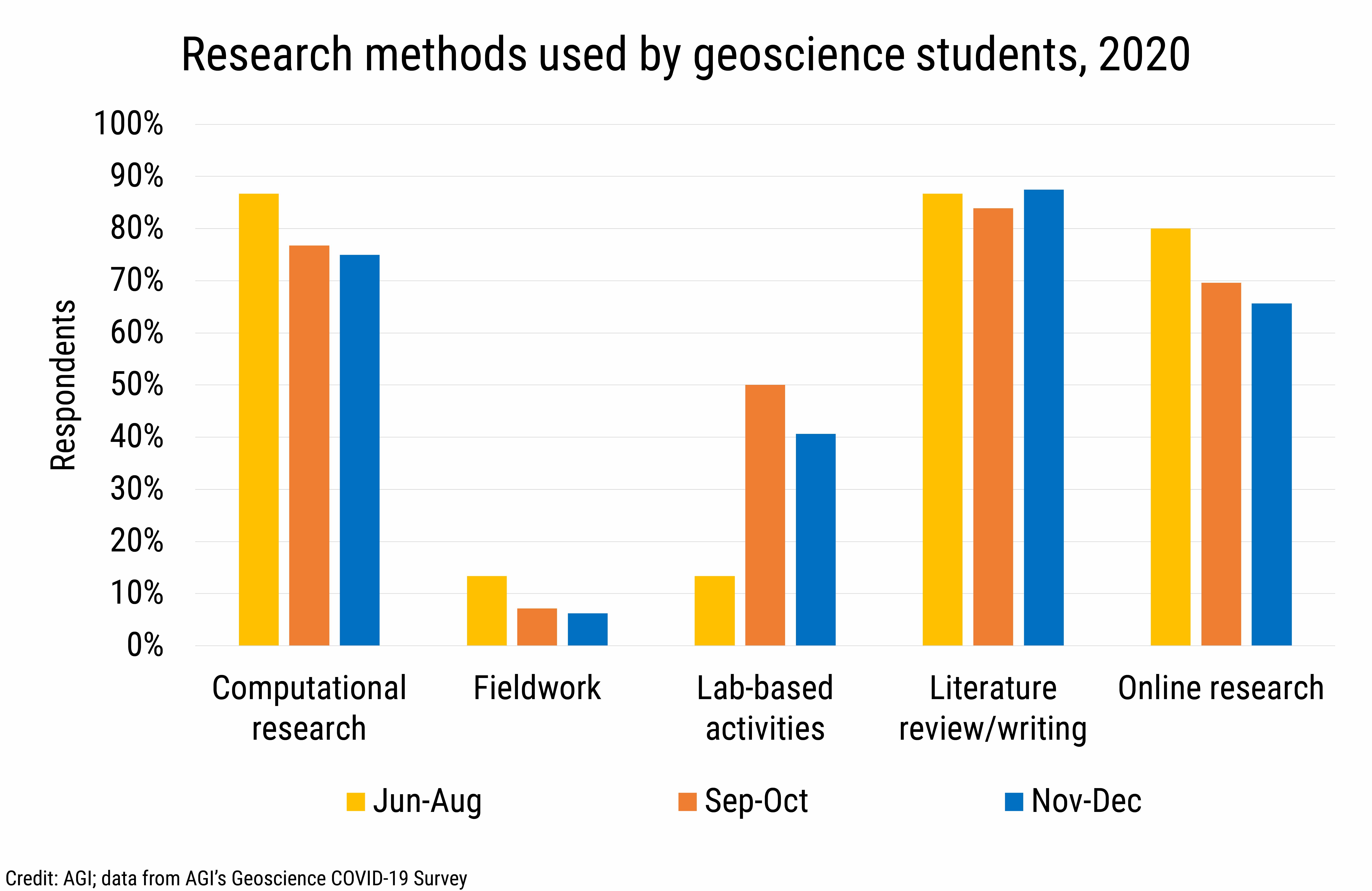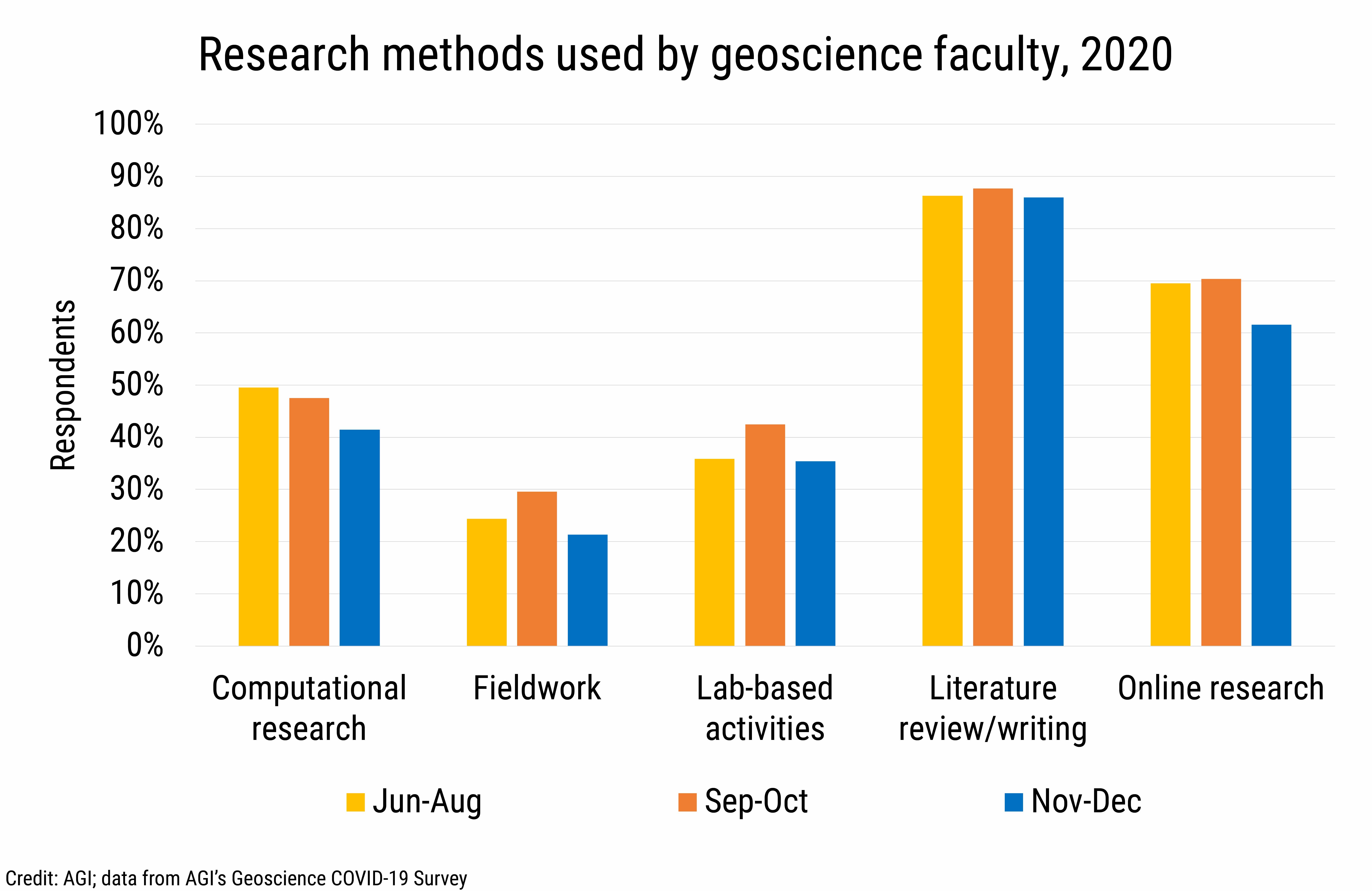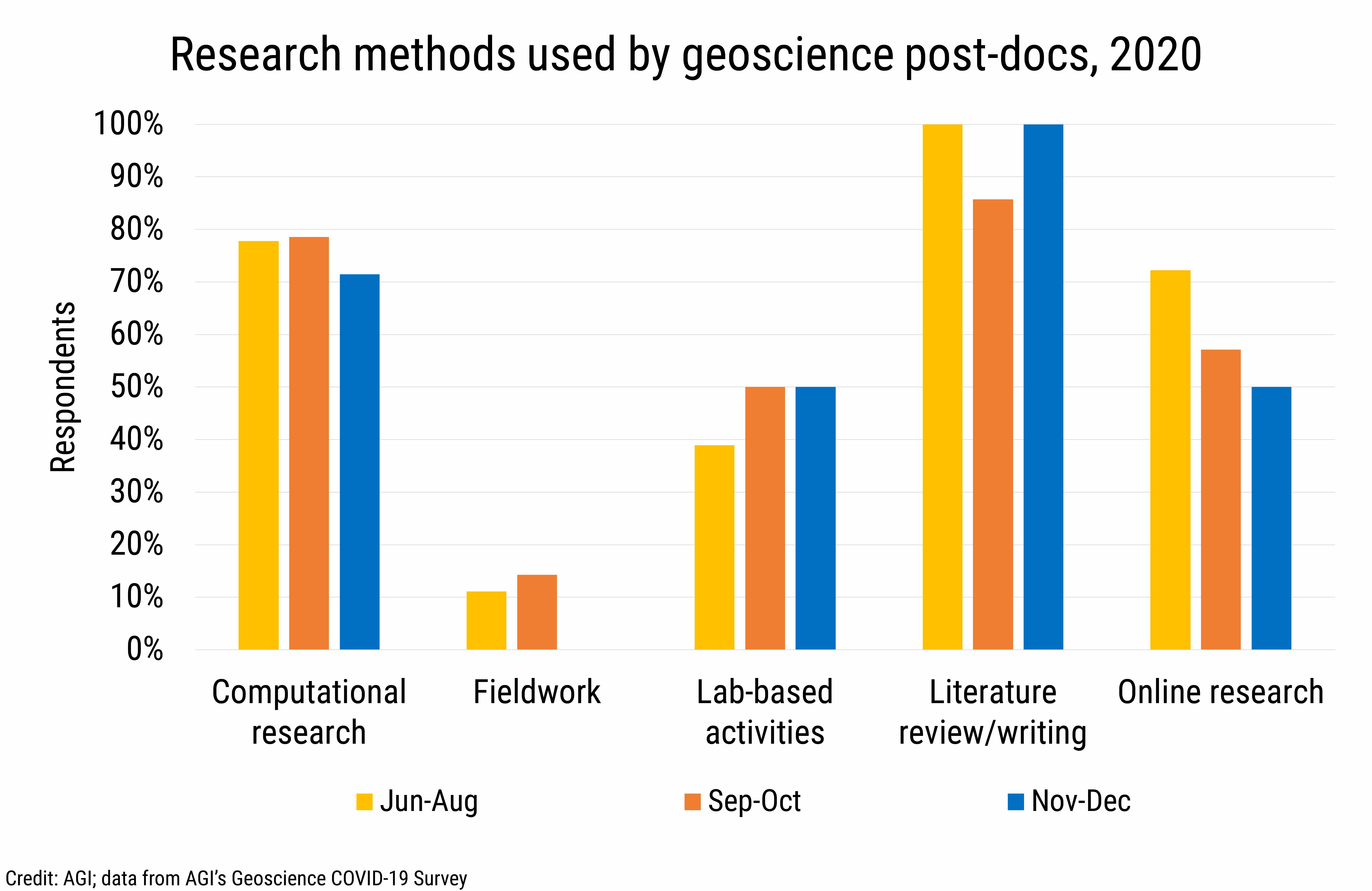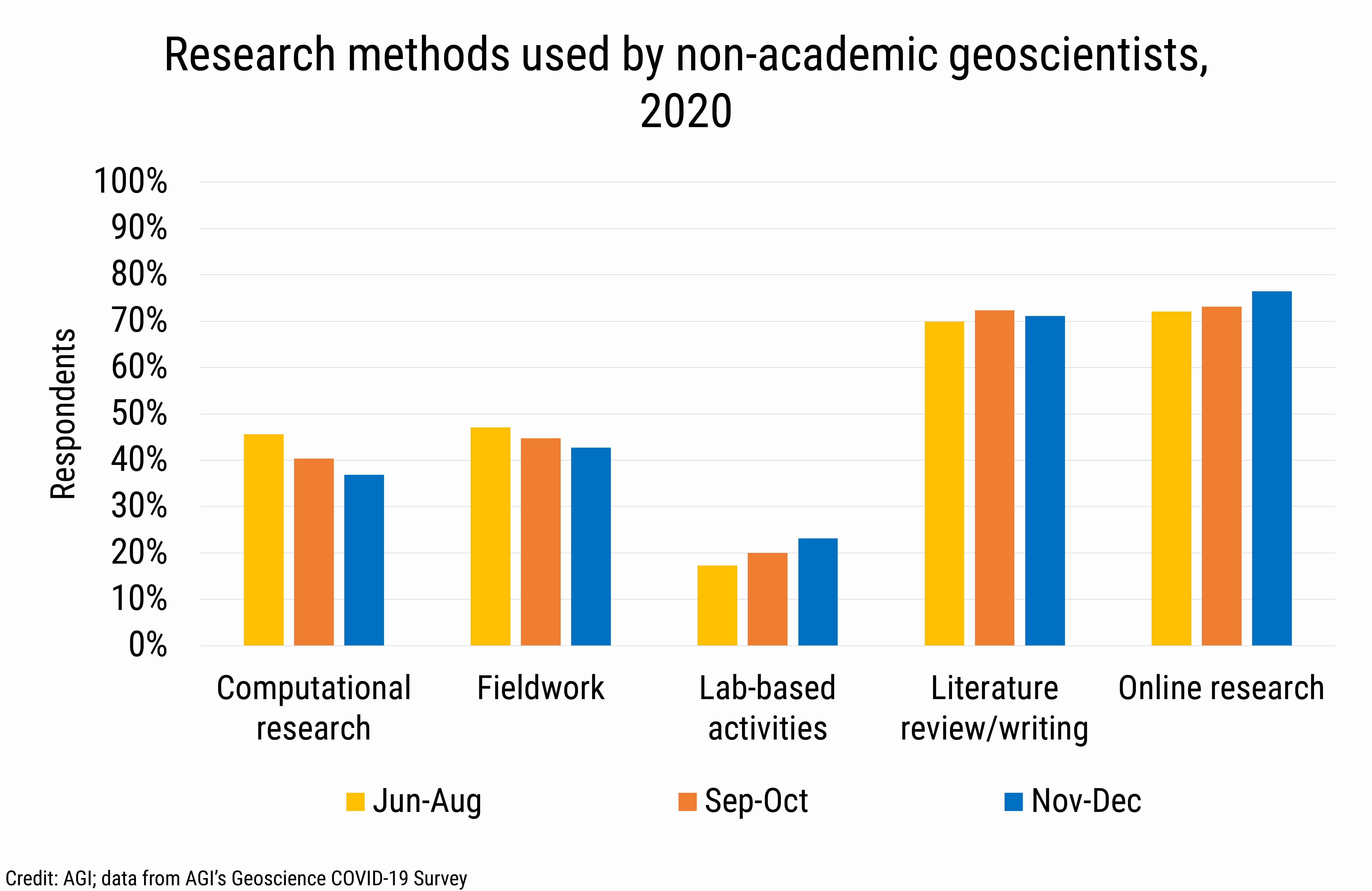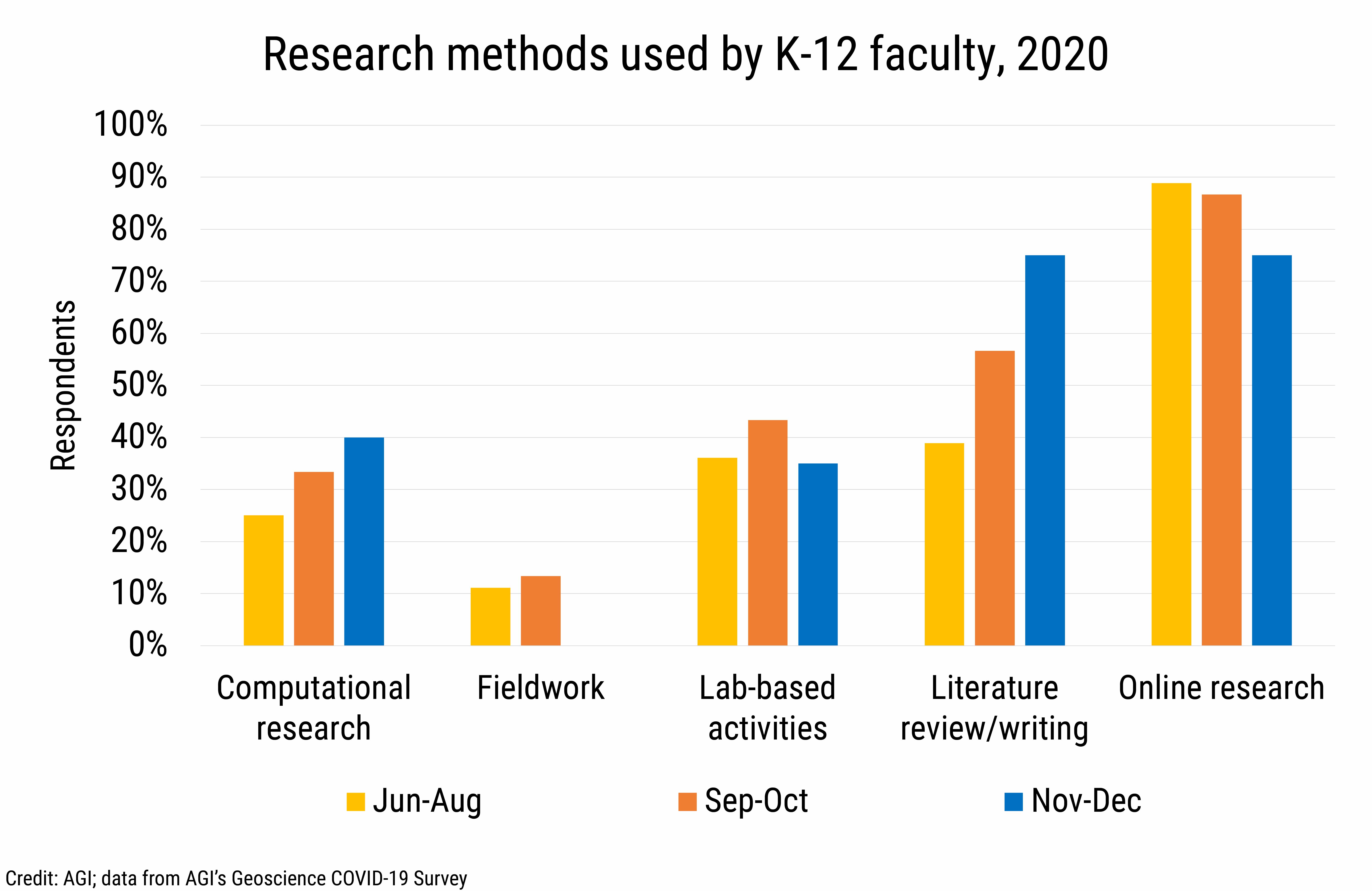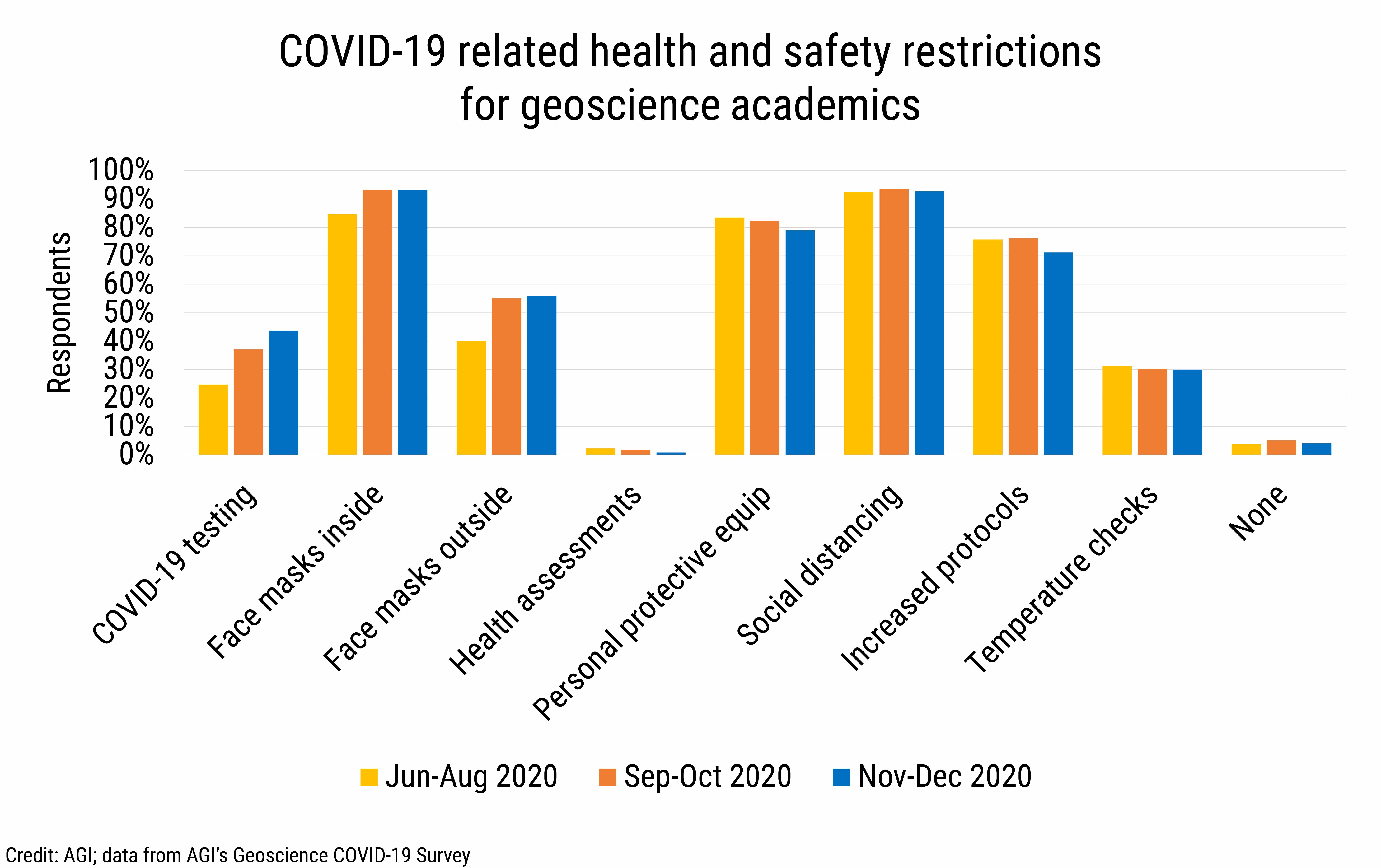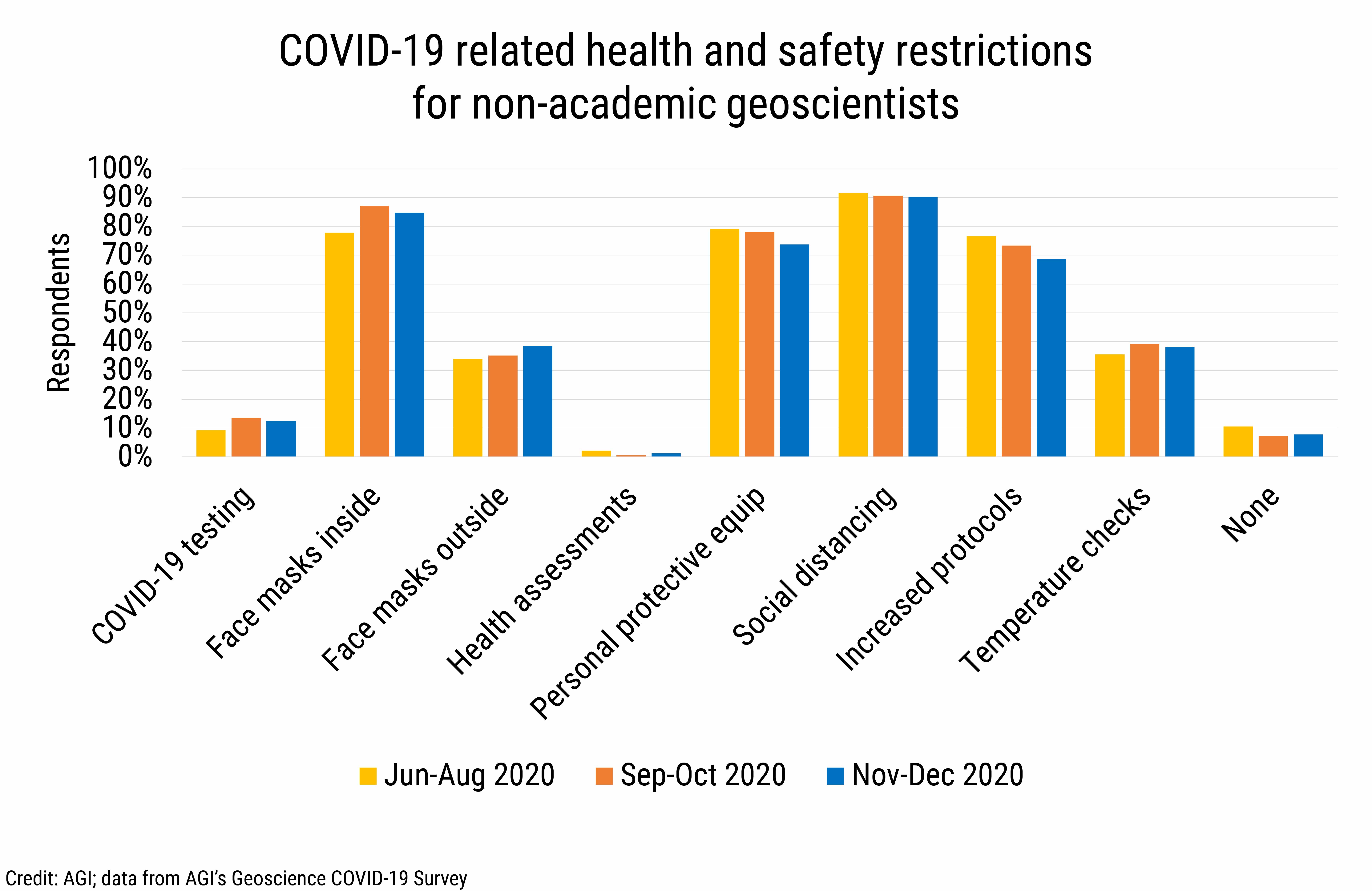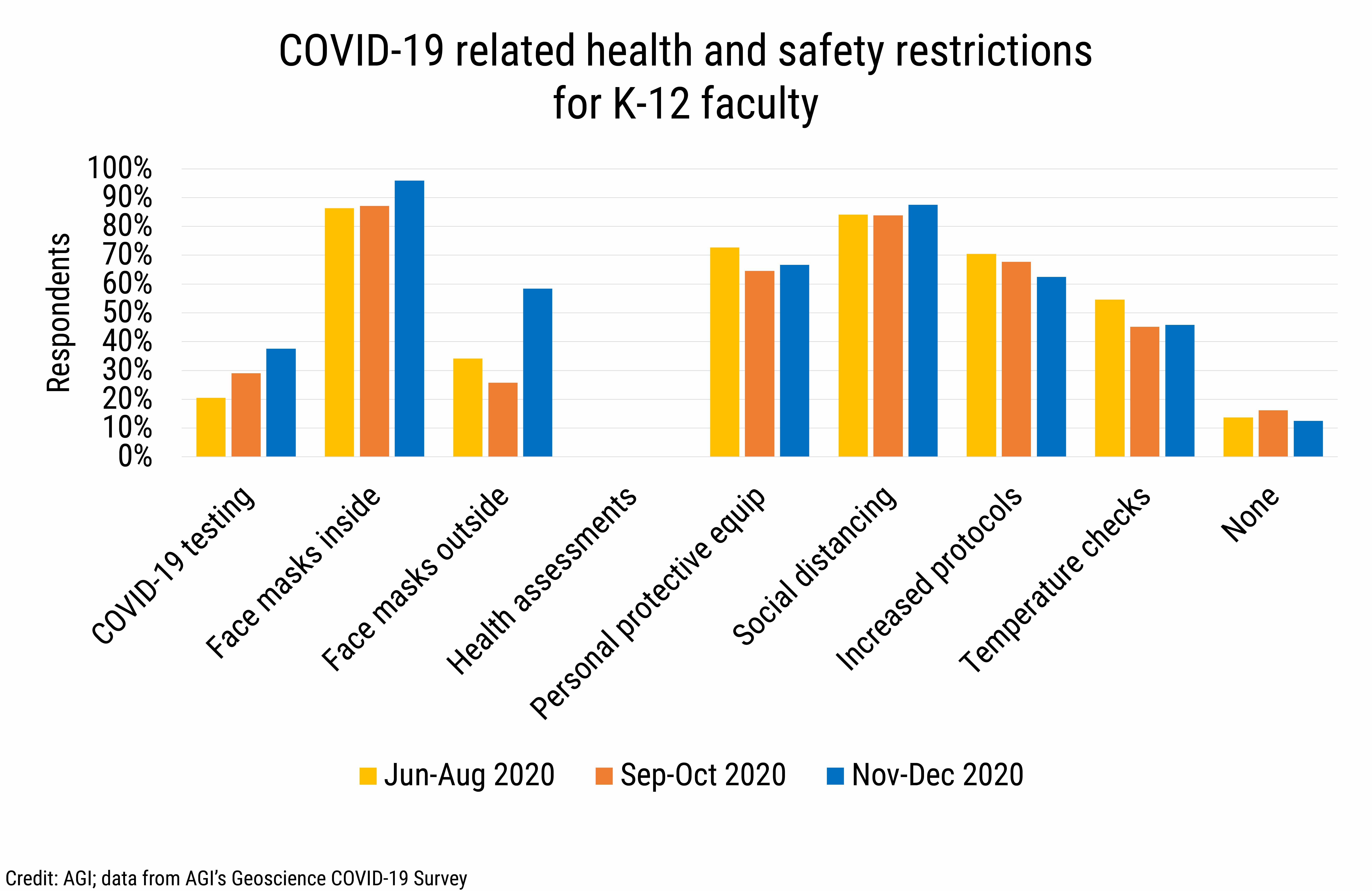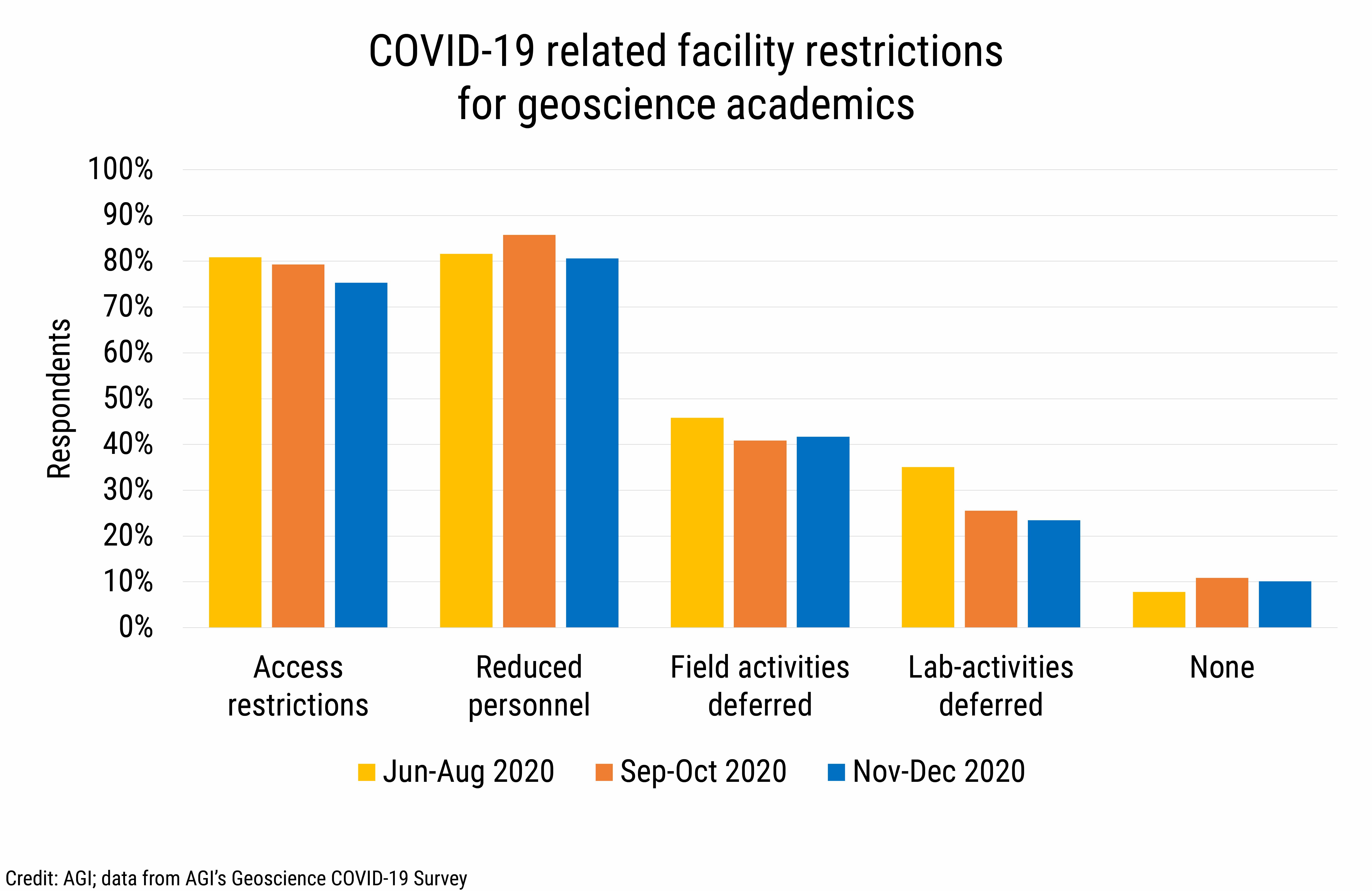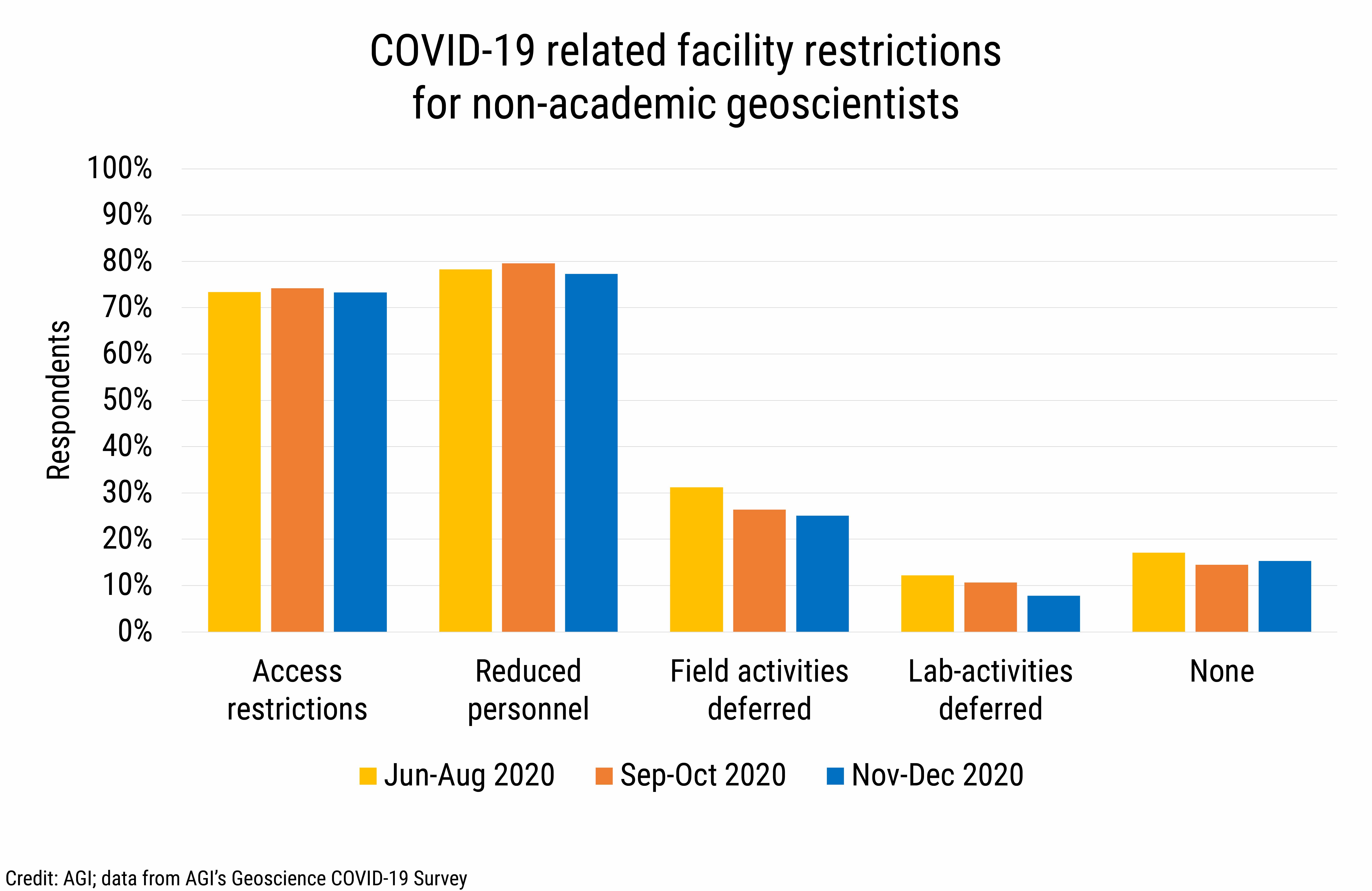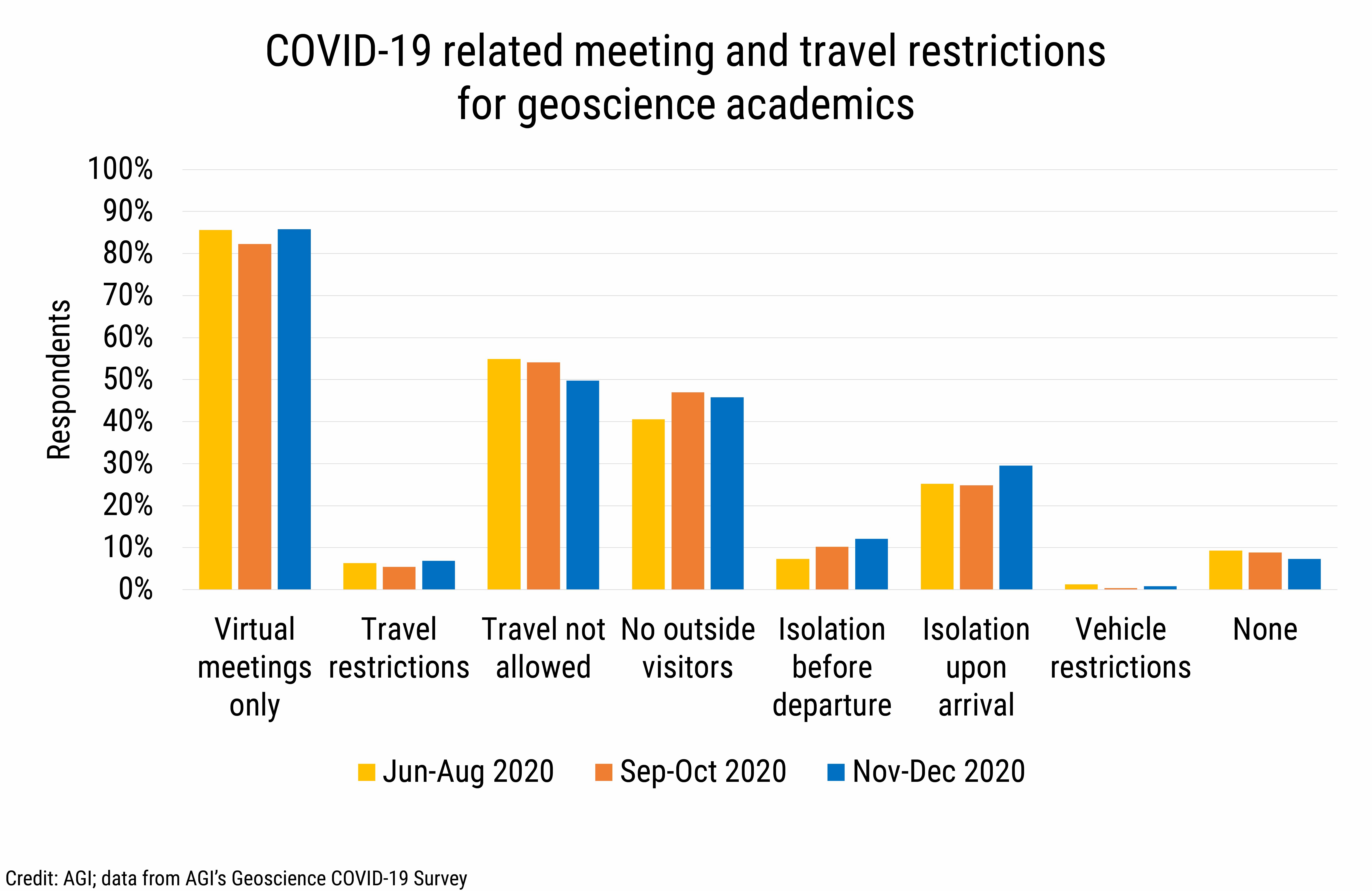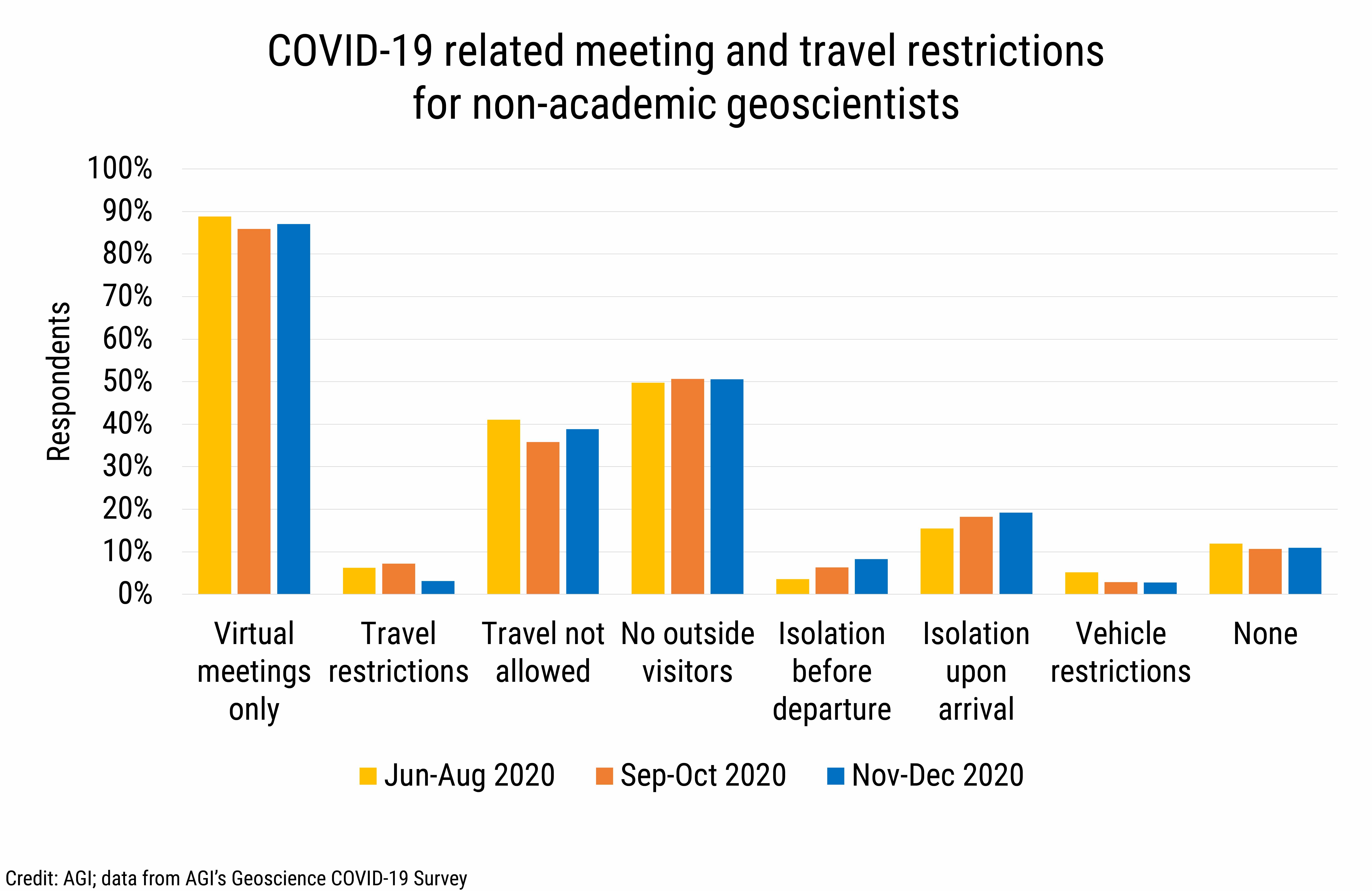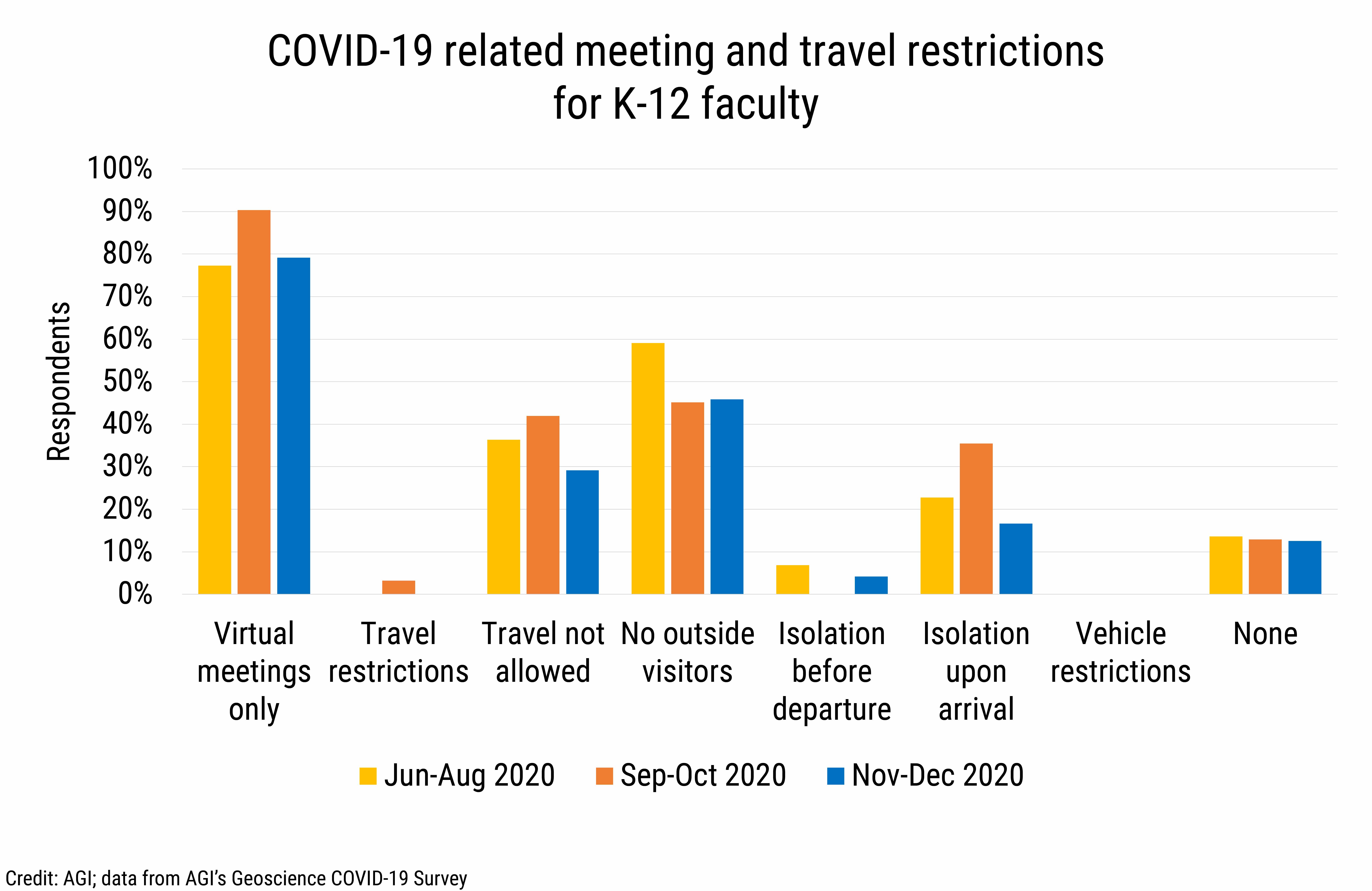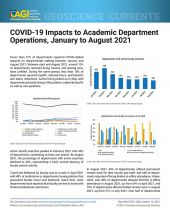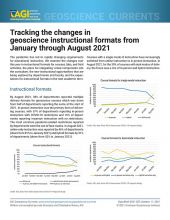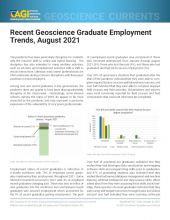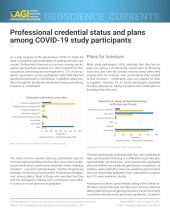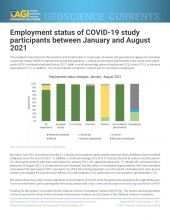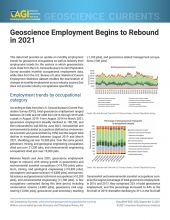In this data brief we examine the research methods used by geoscientists between June and December 2020 as well as related health and safety, facility, and meeting restrictions. From June through December, literature review and writing and online research were the most reported research method by all cohorts, with the majority of students and post-doctoral fellows also conducting computational research. Online meetings continue to be the norm, the use of face masks and social distancing continue to be the most commonly reported health and safety protocol in use, and access restrictions and limited staffing continue to be implemented at facilities and field sites.
Research Methods
From June through December 2020, work and research for all academic cohorts primarily revolved around literature review and writing activities, online research, and computational research – the latter more common among post-doctoral fellows and students than among faculty. A higher percentage of faculty reported conducting field activities than did students or post-doctoral fellows, while a higher percentage of students and post-doctoral fellows reported conducting lab-based activities than did faculty.
Literature review and writing and online research were the most reported research methods used by non-academic geosciences professionals from June through December 2020. The percentage of non-academic geoscientists conducting computational research and field activities was highest during the summer months and declined starting in September. Over the same period the percentage of non-academic geoscientists conducting lab-based activities increased, from 17% to 23% during November and December 2020.
Online research was the most reported research method by K-12 faculty, and while the percentage of respondents conducting online research declined from 89% in June-August to 75% in November-December, there was an increase in the percentage of K-12 faculty conducting computational research and literature review and writing. Lab-based activities were more commonly reported than field activities, and the percentage of faculty reporting conducting these research activities peaked in September-October at 43% for lab-based activities and 13% for field activities.
Health and Safety Restrictions
The most common health and safety restrictions reported across all cohorts were wearing face masks inside buildings and the use of social distancing. Health and safety restrictions that showed an increase between June and December 2020 included COVID testing at K-12 and post-secondary institutions, and the use of face masks both inside and outside buildings. Across all cohorts, there was a slight decrease in the use of personal protective equipment, and increased health and safety protocols.
The use of social distancing remained relatively steady for all cohorts, and over November-December 2020, 93% of geoscience academics, 90% of non-academic geoscientists, and 88% of K-12 faculty reporting use of this health and safety protocol. The use of temperature checks remained steady for geoscience academics at 30%, whereas its use increased for non-academic geoscientists to 38% and decreased to 46% for K-12 faculty in November-December 2020.
Facility Access and Use
Top facility restrictions for all cohorts included access restrictions to facilities or fieldwork sites, including alternate schedules and limited hours, and reduced number of personnel at facilities or field sites. Access restrictions did ease slightly for academic geoscientists by November-December 2020, with 75% of academic geoscientists reporting this facility restriction, down from 81% over the summer.
The percentage of academic and non-academic geoscientists reporting deferral of field and lab-based activities declined from June through December 2020, while the percentage of K-12 faculty reporting deferral of field activities remained steady near 33% and the percentage reporting deferral of lab activities increased to 46% in November-December 2020.
Meetings and Travel
Online and phone meetings continue to be the norm with over 80% of academic and non-academic geoscientists and over three-quarters of K-12 faculty reporting this requirement between June and December 2020. Prohibition of all travel eased slightly for all cohorts over June-December 2020 period. Over the same period, isolation protocols increased, most commonly isolation upon arrival at the destination spot, including when returning from travel away from one’s home location. Over 40% of respondents reported restrictions prohibiting outside visitors and guests from June through December, and this restriction slightly increased for academic geoscientists starting in September and decreased for K-12 faculty after the summer months.
We will continue to provide current snapshots on the impacts of COVID-19 on the geoscience enterprise throughout the year. For more information, and to participate in the study, please visit: www.americangeosciences.org/workforce/covid19.
Funding for this project is provided by the National Science Foundation (Award #2029570). The results and interpretation of the survey are the views of the American Geosciences Institute and not those of the National Science Foundation.



